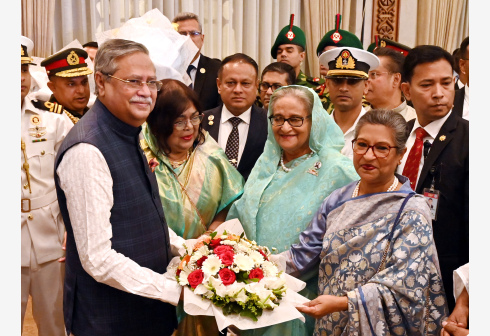Men Outnumber Women in media access

Kisii
Sunday, July 16, 2023
KNA By Ongwae Julius/ Jane Naitore
Justus Ndemo (aged 35), sits outside their house holding his mobile phone as he listens to music from his father’s radio in Suneka township, Kisii South Sub-county, Kisii County.
According to Ndemo, listening to the radio was more convenient compared to other media because one can simultaneously carry out various activities including chatting with friends on social media.
"Listening to the radio is the most interesting thing for me, because I can perform various tasks including farming or chatting with friends while enjoying music in the background,” says Ndemo
Ndemo’s sentiments resonate with the recent Kenya Demographic and Health Survey (KDHS) for 2022 which states that men have a higher percentage of media usage compared to women in Kenya, although radio is the most prevalent form of media exposure for both genders.
The KDHS volume 1 report which was published by Kenya National Bureau of Statistics (KNBS) indicates that 9 percent more men than women listen to the radio at least once a week, and 5% more men watch television in the same period.
The study highlights that men's exposure to television has increased, while the percentage of women and men exposed to radio has been declining. Women's exposure to radio declined over time.
A farmer, Grace Abunda aged 52, says experience had revealed that television had caused many people to shift away from radio.
This, she says, is the reason why many people have television in their homes and less radios.
Among the three media platforms, television is more commonly accessed in urban areas, while radio remains the predominant form of media in rural areas according to the survey.
The survey also indicates a rising trend in exposure to television, while the percentage of both women and men exposed to radio has been declining.
Among the three media platforms, television is more commonly accessed in urban areas, with 2 percent more men than women being exposed to it while in rural areas, radio remains the predominant form of media, with 63 percent
of women and 77 percent of men engaging with it.
The survey also indicates a rising trend in women's exposure to television, increasing from 29 percent in 2003 to 55 percent in 2022 while during the same period, men's exposure to television increased from 45 percent to
60 percent
On the other hand, the percentage of both women and men exposed to radio has been declining, with women's exposure decreasing by 5 percent between 2003 and 2014, and further dropping by another 7 percent to 62 percent in
2022.
According to the KNBS survey, internet usage has also increased, being more prevalent in urban areas compared to rural areas, with higher percentages of women and men in urban areas reporting internet usage in the past 12 months compared to their rural counterparts.
Internet usage is more prevalent in urban areas compared to rural areas with approximately 68 percent of women and 80 percent of men in urban areas reporting using the internet in the past 12 months, while the figures were 28 percent of women and 41 percent of men in rural areas.
Abel Omweno, a worker in a cyber café located in Nyanchwa, near Kisii town says that men tend to be more preoccupied with accessing the internet in his premises because they seem to have more free time than women who must attend to household chores.
“I can't remember the last time I listened to the radio or watched television although I find time for my friends on social media,” chips in Sharon Amanda, a student at Kisii University.
However, Amanda says she occasionally watches television on her mobile phone when she feels there is an important happening in the country that might affect her or her kin.
The survey indicates that she is among the significant portion of women and men who reported using the internet almost daily.
Courtesy K.N.A
What's Your Reaction?



































































































































































































































































































